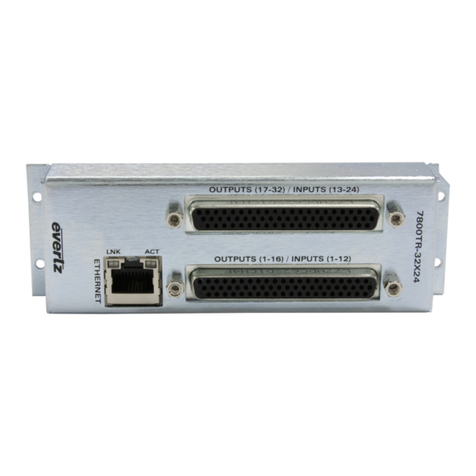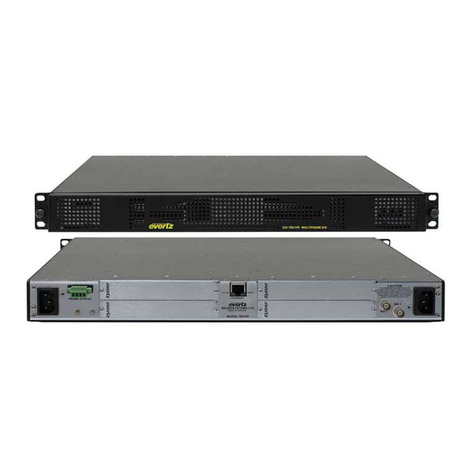
SC-1000 System Controller
Page iv Revision 1.0 TABLE OF CONTENTS
Figures
Figure 1-1: SC-1000 System Controller ........................................................................................................1-1
Figure 2-1: SC-1000 Front View....................................................................................................................2-1
Figure 2-2: SC-1000 Rear View ....................................................................................................................2-1
Figure 2-3: SC-1000 Q-Links.........................................................................................................................2-2
Figure 2-4: SC-1000 Serial Ports ..................................................................................................................2-2
Figure 2-5: SC-1000 Redundant Controller...................................................................................................2-3
Figure 2-6: SC-1000 Ethernet Connection ....................................................................................................2-3
Figure 2-7: SC-1000 Display and Floppy Disk ..............................................................................................2-4
Figure 2-8: SC-1000 Connections .................................................................................................................2-4
Figure 3-1: SC-1000 Front Dimensions.........................................................................................................3-1
Figure 3-2: Mains IEC Inlets ..........................................................................................................................3-1
Figure 3-3: Status LED and Display ..............................................................................................................3-2
Figure 3-4: Typical System Design................................................................................................................3-3
Figure 3-5: Cross Over Network Cable .........................................................................................................3-4
Figure 3-6: Timecode Connections ...............................................................................................................3-6
Figure 3-7: Selecting the “Use Serial Communications” Option....................................................................3-6
Figure 3-8: Selecting the “Use Ethernet Communications” Option ...............................................................3-7
Figure 3-9: Networked File Downloaded .......................................................................................................3-8
Figure 3-10: Networked Dual Controllers ......................................................................................................3-9
Figure 3-11: Networked Dual Controllers with PC Download .......................................................................3-9
Figure 4-1: Example Router Frame – Rear View ..........................................................................................4-1
Figure 4-2: Example Rear Panel View ..........................................................................................................4-1
Figure 4-3: Router and Control Panel Address Switches..............................................................................4-2
Figure 4-4: Small System Design ..................................................................................................................4-2
Figure 4-5: Medium System Design ..............................................................................................................4-3
Figure 4-6: Large System Design..................................................................................................................4-4
Figure 4-7: Q-Link Opto-Isolator....................................................................................................................4-5
Figure 4-8: Q-Link Protection ........................................................................................................................4-5
Figure 5-1: WinSetup Application ..................................................................................................................5-1
Figure 6-1: Computer Port.............................................................................................................................6-1
Figure 6-2: Computer Port.............................................................................................................................6-1
Figure 6-3: Reset and Card Ejector Switch ...................................................................................................6-2
Figure 7-1: Controller Module........................................................................................................................7-1
Figure 8-1: Dual Redundant Controller .........................................................................................................8-1
Figure 8-2: Control Button .............................................................................................................................8-1
Figure 11-1: Fan Filters .............................................................................................................................. 11-1
Tables
Table 3-1: Q-Link System Design..................................................................................................................3-3
Table 3-2: Q-Link and Serial Ports ................................................................................................................3-4
Table 7-1: Menu Structure.............................................................................................................................7-3
Table 12-1: Tree of Commands in MIB File................................................................................................ 12-4
Table 12-2: Status LEDs............................................................................................................................. 12-5
Table 12-3: Factory Set Links..................................................................................................................... 12-6

































